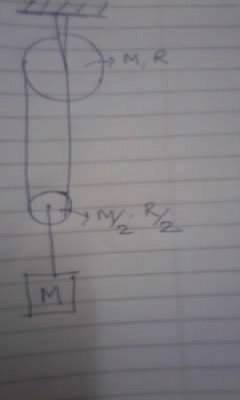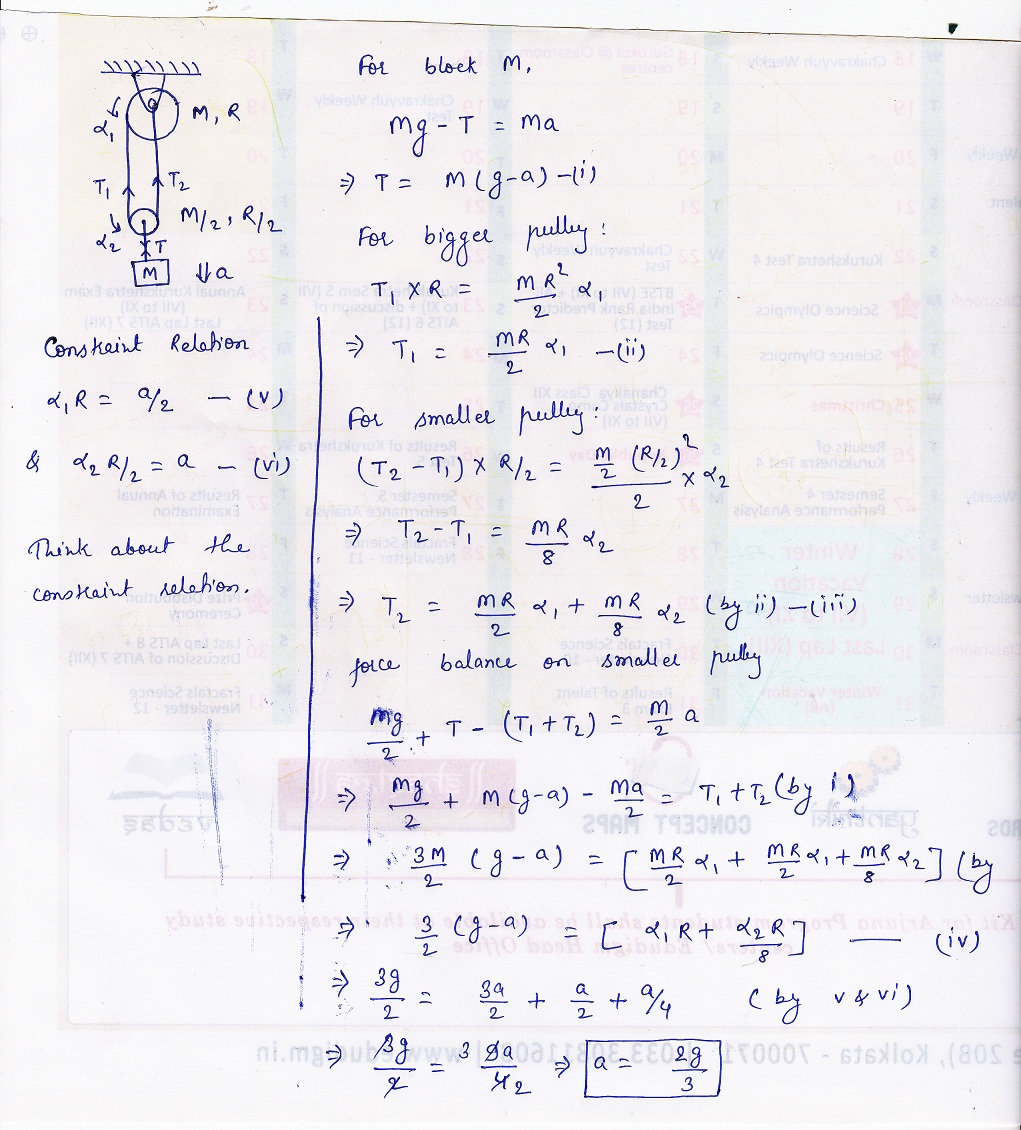Sir,for the first constraint velocity of the string near the bigger pulley and near the smaller pulley must be same.
therefore,
α1R=α2R/2 + a
and the second one is α2R/2=a
solving these two equations
α1R=2a and α2R=2a.
where am i going wrong?
 Akash Anand Your are going wrong from the very first line.
Akash Anand Your are going wrong from the very first line. Akash Anand Distance between the two pulleys are changing with time then why the velocity should be same?
Akash Anand Distance between the two pulleys are changing with time then why the velocity should be same? Anonymous @Akash Sir will the string not break if it has tension t1 and t2 both.
Anonymous @Akash Sir will the string not break if it has tension t1 and t2 both.

